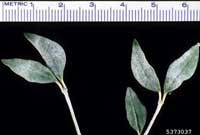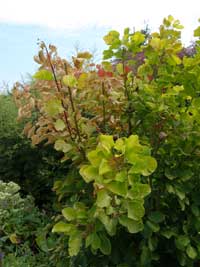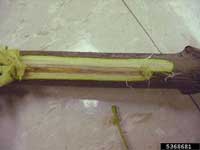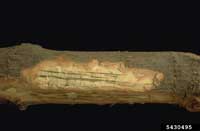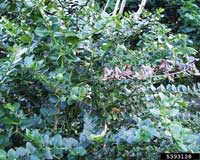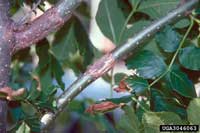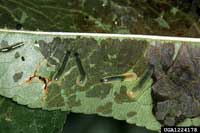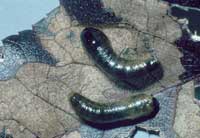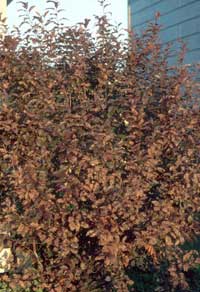Extension > Garden > Diagnose a problem > What's wrong with my plant? > Deciduous > Barberry > Leaves discolored
Barberry > Leaves > Leaves discolored
1 of 4
Powdery Mildew
Erysiphe pulchra and Phyllactina guttata
- White spots or blotches on leaves
- In severe cases leaves may be completely coated with white powdery fungal growth
- Leaves may be stunted, reddened, scorched and curled or puckered by midseason
- More common on yellow leaved species
- More information on Powdery Mildew
2 of 4
Verticillium wilt
Verticillium dahliae
- Leaves on one to several branches turn red to yellow, wilt, die and fall off
- Dark olive to gray streaks are often visible in the sapwood if the bark is peeled back
- Symptoms may appear in several branches or in the entire shrub
- Symptoms are often most obvious in late summer and autumn but can occur throughout the growing season
- More information on Verticillium wilt
3 of 4
Botryosphaeria canker
Botryosphaeria dothidea
- Leaves on one or more branches wilt, turn brown and die
- Bark on affected branches is darker, cracked, or blistered at the site of the canker
- Wood beneath the canker is dark brown
- Common on shrubs stressed by drought, winter injury and other factors
- More information on Botryosphaeria canker
4 of 4
Pear sawfly (pearslug)
Caliroa cerasi
- Larvae feed on upper surface of leaf between the veins, "windowpaning" the leaf as they feed
- Damaged leaves often have a grayish appearance before turning brown
- Leaves may drop prematurely
- Larvae normally feed about 4 weeks beginning in June; a second generation can start in August
- Larvae are ½ inch long, shiny, slug-like, and are normally dark olive in color.
- More information on Pear sawfly





